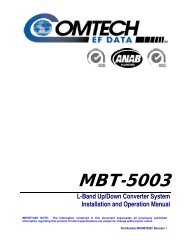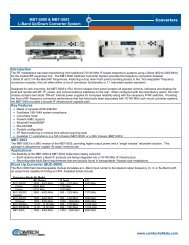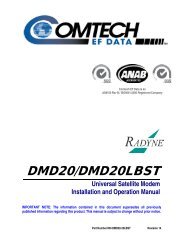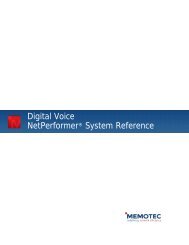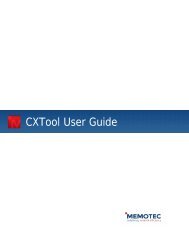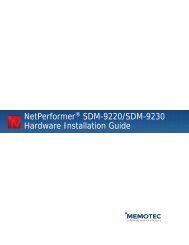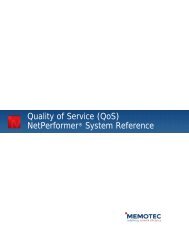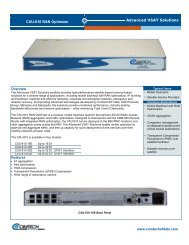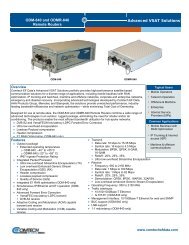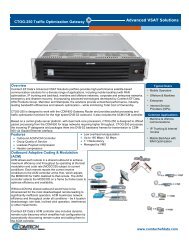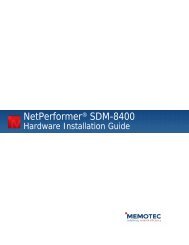ATM Option System Reference - Comtech EF Data
ATM Option System Reference - Comtech EF Data
ATM Option System Reference - Comtech EF Data
Create successful ePaper yourself
Turn your PDF publications into a flip-book with our unique Google optimized e-Paper software.
Product Overview<br />
• Another difficulty is that resources allocated to a PVC are guaranteed. This<br />
means that even if the PVC is not being used the resources must be reserved by<br />
the network, which detracts from overall network efficiency.<br />
End <strong>System</strong> A<br />
<strong>ATM</strong> SW2<br />
PVC1 (VPI=1, VCI=1)<br />
<strong>ATM</strong> SW1<br />
VPI=1 & VCI=1 -><strong>ATM</strong> SW5<br />
<strong>ATM</strong> SW4<br />
With SVCs, configuration of the virtual connections is pushed to the end system, greatly<br />
simplifying VC management for network providers.<br />
• SVC parameters are configured on the end system (the NetPerformer), and are<br />
used whenever a connection is established.<br />
• The <strong>ATM</strong> switch uses these parameters to determine whether it can satisfy the<br />
end system requirements, such as bandwidth and QoS. If the resources are unavailable,<br />
the switch can reject a request to establish an SVC.<br />
• Each end system is assigned a unique <strong>ATM</strong> address, which is used by other end<br />
systems to establish a VC with this node. This is similar to using a telephone<br />
number to place a phone call. <strong>ATM</strong> addresses are discussed further on See “<strong>ATM</strong><br />
Addressing” on page 9..<br />
1.2.6 User to Network Interface (UNI)<br />
UNI (User-to-Network Interface) is the generic name for the various processes responsible<br />
for the exchange of information between an <strong>ATM</strong> end system and an <strong>ATM</strong> switch. UNI is<br />
responsible for controlling <strong>ATM</strong> SVCs. Two components are required to implement<br />
SVCs:<br />
• UNI signaling (see next section)<br />
• ILMI (Integrated Local Management Interface), described on See “Integrated<br />
Local Management Interface (ILMI)” on page 8..<br />
UNI Signaling<br />
<strong>ATM</strong> SW3<br />
Figure 1-1: <strong>ATM</strong> PVCs in the Network<br />
<strong>ATM</strong> SW5<br />
VPI=2 & VCI=2 -><strong>ATM</strong> SW1<br />
End <strong>System</strong> B<br />
PVC2 (VPI=2, VCI=2)<br />
UNI Signaling is responsible for establishing and tearing down SVCs. It is similar in<br />
function to the D-Channel in ISDN.<br />
NOTE: The ITU-T Q.2931 specification, from which the various UNI implementations<br />
are derived, is based on the ISDN specification, ITU-T Q.931.<br />
Memotec Inc. 1-7



